How to start managing your boss (with no hard feelings)
Managing your boss, often referred to as “managing up” (with the idea of “managing down” being conventional management, i.e. you as a manager to your direct reports), is a very important aspect of work -- and, honestly, of happiness at work.
We know anecdotally that many managers have a lot on their plate. Productivity guru and thought leader Dorie Clark has noted for years that an average manager will spend 4.1 hours per day answering emails. Now add in meetings. Add in other back-of-house responsibilities like performance management, budgeting, approving requests, and more. It can become very overwhelming for a manager.
Some have estimated managers spend 15 hours per week on admin work, which, per ServiceNow, equates to 4 million work hours per year at a place with 5,000 headcount. That means managers are doing the equivalent of 2,000 extra employees in admin work annually.
The Shiny Object Syndrome
As a result, it’s sad but unsurprising that many managers struggle with priorities. They’re pulled in numerous directions. Into this all comes “The Shiny Object Syndrome,” which long-time LinkedIn CEO often discusses. In a world with so many competing priorities, managers can find a shiny object -- a new revenue stream, a new tool, a new process, a new anything -- and direct all their employees to stop what they were doing and pivot to that new thing.
Between confusion around priorities and the constant potential for new shiny objects in the form of thought leadership-led processes and tech suites, managers sometimes need to be reined in. They need to be managed.
That’s a big part of managing your boss: getting them to focus on what matters, what needs to be done now vs. later, what the priorities are, what people should be working on, and bigger issues like employee engagement and morale.
In short, managing your boss is often about getting them out of the tasks and deliverables and helping them set some foundation for what’s what and how the team can best drive forward.
But this is also an incredibly fraught process because, well, they’re your boss. They often make more money and are closer to the power core of the organization. They might have more experience. They were organizationally-vetted to manage your workflow. (Admittedly, there is a difference between “managers” and “leaders.”) Can you really approach them and manage theirs? Yes. But it’s tricky, and the below is a plan to approach managing your boss.
Managing your boss: Start with psychology above all
Think about this question first: in professional and personal relationships, what do confident people do? They help each other. They give of themselves. They are not afraid of rank or position because they’re imbued with confidence.
Unfortunately, you cannot presuppose that your manager is confident. They may be an expert in some area of the business, absolutely. But that doesn’t mean confidence, and there may be things in their family life that are challenging that confidence, etc.
Don’t presuppose confidence or even expertise in a manager. Instead, realize that your manager has their own fears, concerns, and frustrations. Those are driven by their life, but also by what their own manager is telling them to focus on -- and how their manager is treating them.
As Liz Ryan has noted, the best first step to managing your boss is realizing your boss is a whole person, which means they have a life outside of work, fears, concerns, things they do well, things they do poorly, experiences that shape them, and desires/aspirations of their own, both personally and professionally.
If you think of work more along the lines of “new people features,” i.e. people changing through children, promotions, etc. as opposed to “new product features,” you can take a more humanistic view of work. While that might sound cheesy, it helps a lot with managing your boss.
Pro tip: Understanding your boss’ overall work style and whether they prefer big picture thinking or detail-oriented thinking can go a long way in overcoming conflict.
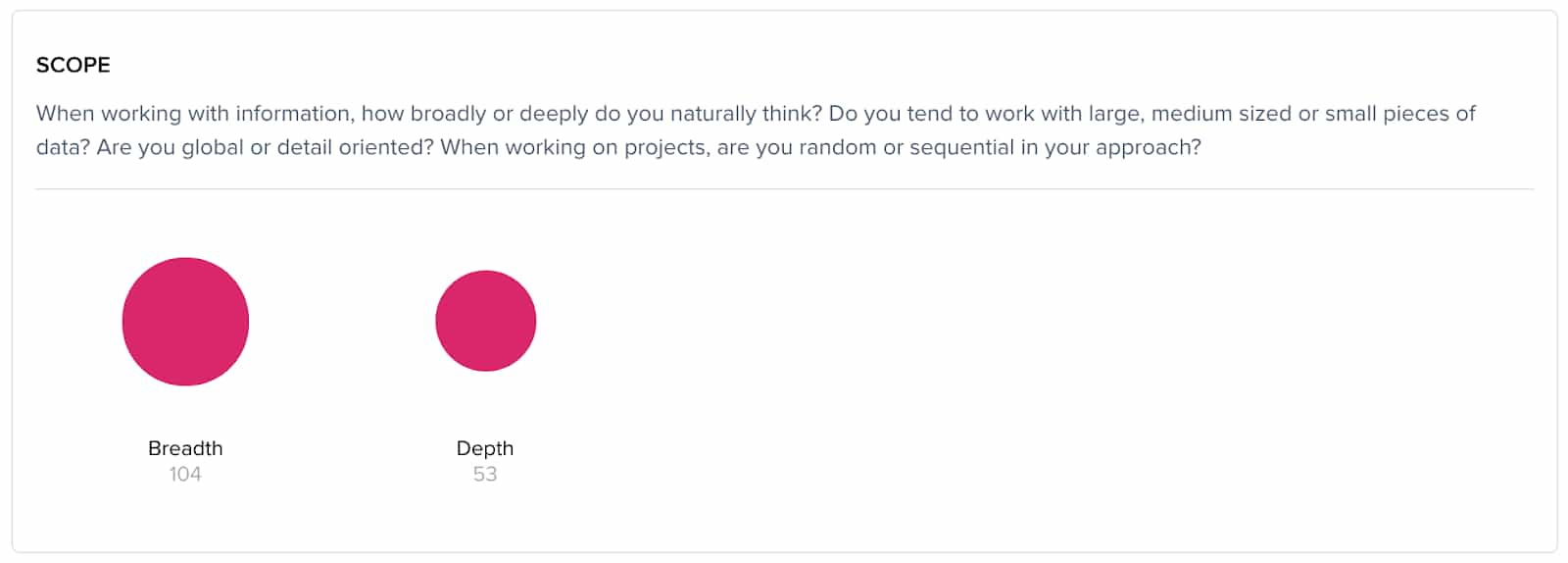
Perspective shift
What do the best salespeople and customer service reps do? They put themselves in the shoes of who they are talking to, be that prospect or customer. Good leaders do that too; in essence, they show empathy and try to understand a worldview, strategy, or approach different from how they’d do it, in the hopes of learning something.
Good employees who are adept at managing bosses do the same. You might think your boss is a clueless buffoon on some topics, but try to figure out why they are approaching something the way they are. Is it their background? Is it what their boss wants? Is it part of a bigger goal aside from just this project? Try to have some empathy for their position. It helps you at managing your boss.
Pro tip: Pinpointing their leadership style can help you understand the choices your boss makes, and your reaction to them.
How does your boss like to be communicated with?
Some bosses cannot stay on top of email. Some bosses get lost in channels on Slack or other platforms. Some absolutely need the walk-and-talk of what’s going on at that moment. You need to understand how your boss likes to be communicated with in order to become skilled at managing your boss.
In addition to how, you need to know when. Some bosses, if they’re in a raising children age range, will disappear at 2:30pm and resume on email or some channel at 7pm or later. You need to know the pockets of time that your boss dedicates to certain elements of work in order to effectively manage the relationship.
Pro tip: Find out if your boss prefers affective communication vs. neutral communication, and which of the following learning styles resonates with them most: read/write learning style, kinesthetic learning style, visual learning style and hearing learning style.
Managing your boss: What are their goals and targets?
At the beginning of a month, quarter, or year (or all three!), ask your boss what they’re currently accountable to. What metrics are they being judged on? What do they need to ship or deliver? First, simply asking this question shows that you care about what they need to do, and it gives the sense that you will help them achieve those things.
More importantly, you know the incentive structure of your boss, which allows you to understand better some of their decision-making and pivots. If you know what they need to achieve, you can help course-correct them if they’re getting too in the weeds on task work. “Hey, John. I understand the importance of details on this project, but isn’t the focus of the month from Tony about finalizing this new account? Let’s focus on making sure that happens. Right? Tell me how I can help best there.”
Pro tip: Find out if they are goal-oriented, or more motivated towards problem solving.
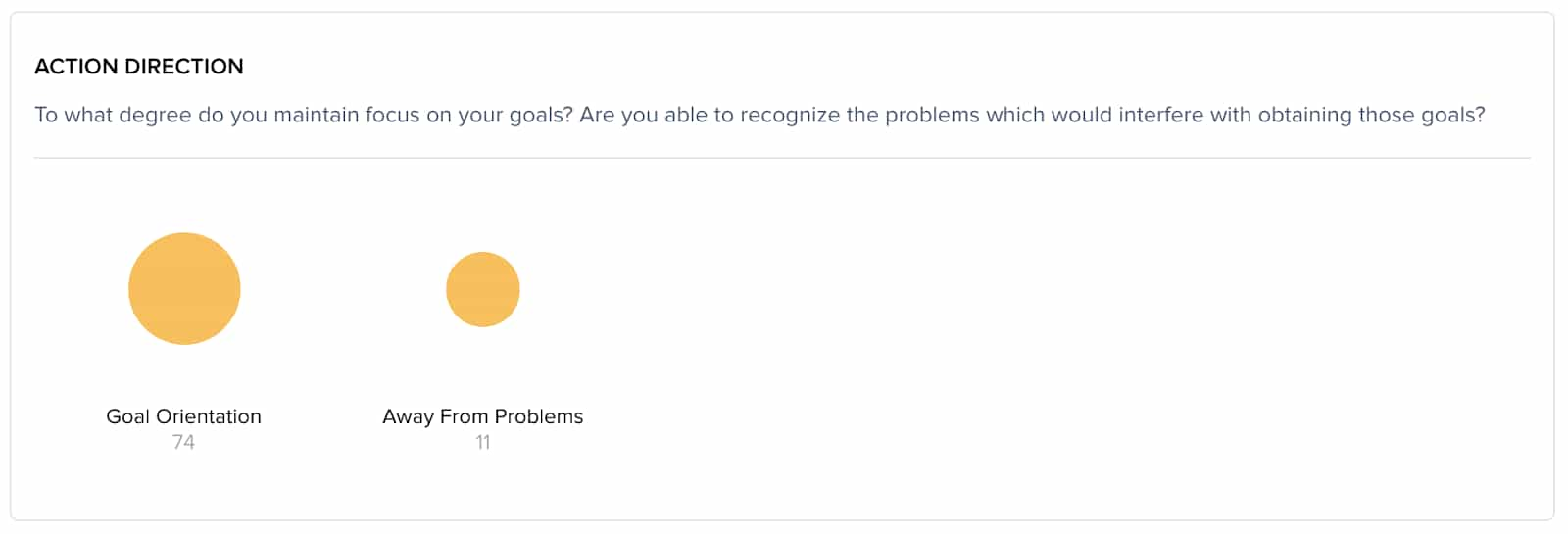
Appreciation and acknowledgement go both ways
We often talk of experience, engagement, and appreciation in one direction -- that of the manager providing it to the employee. That’s important for sure, but if you want to become adept at managing your boss, make sure you always acknowledge them for a job well-done, a project completed, a time that they praised the team, a time they communicated well, etc.
Managers can often have thankless jobs. Thank them. It will build trust and rapport between you and your boss, which also allows you to have more uncomfortable conversations down the road when things seem to be going off the rails.
Pro tip: You can use the F4S app to find out their ‘Influence Style’ — essentially whether they are more motivated by Power, Affiliation or Achievement. Then, lean into that and make sure to tie it into your acknowledgement as it’s sure to make them feel good.
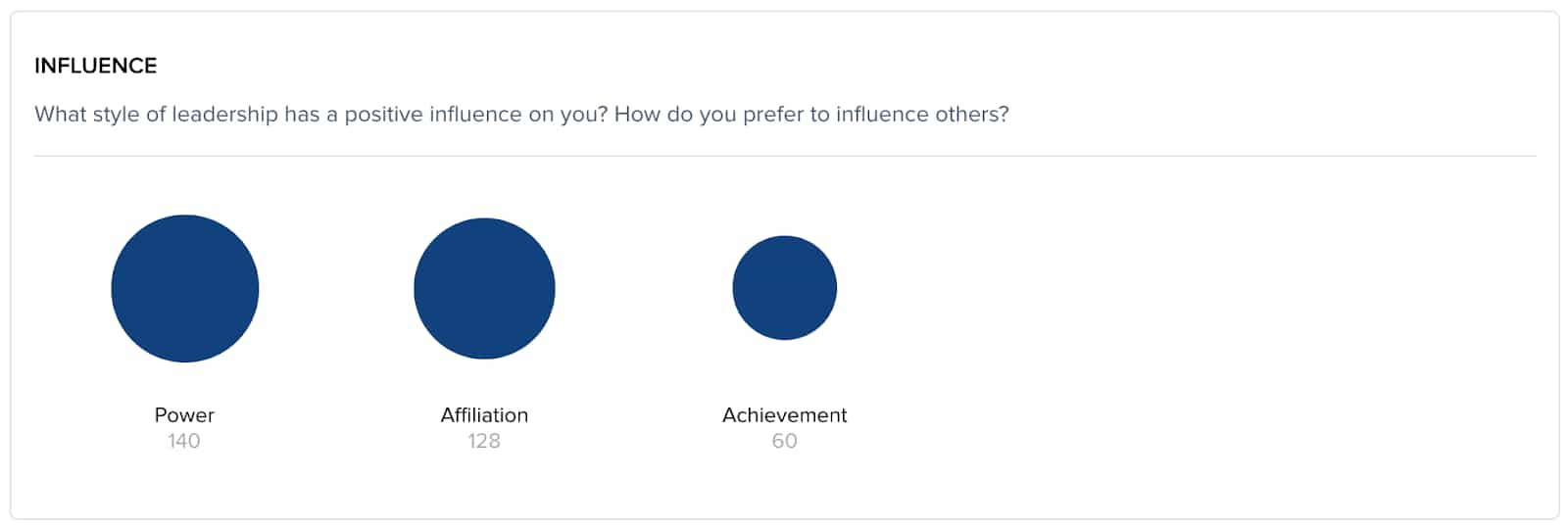
Talk to your boss, and learn from them, about how they want frustration presented
The absolute last thing you want is to be seen as the employee that “rants” as opposed to is constructive or productive. You need to understand how your boss likes to hear criticism and frustration; for many bosses, they want a solution attached. Good. So let’s say there’s a daily standup meeting, but people are going off-kilter and starting to talk about personal commitments (“Sushi with my husband…”) and the meetings are starting to become less-relevant, 2-hour meetings that are eating into your work time.
Instead of ranting about the situation, which is a natural frustration, go to your boss and present a format for the meeting, i.e. three bullet points, all work-related, and focusing on blockers to complete tasks that day. Now, instead of ranting about a crappy meeting, you achieved managing your boss, because your idea might now become the new reality of that meeting’s format.
Pro tip: Check out your boss’ (and team members’) ‘Rules’ style in F4S. This will tell you a lot about how they view authority and rules, and from which angle to approach a complaint.
Getting a feel for their ‘Convincer Process’ style (essentially the process they prefer to become convinced of something new) would be super helpful too! There are four different processes: Examples, Automatic, Consistency or Period of Time. Understanding which style jives best with your boss will help you to make your proposals irresistible.
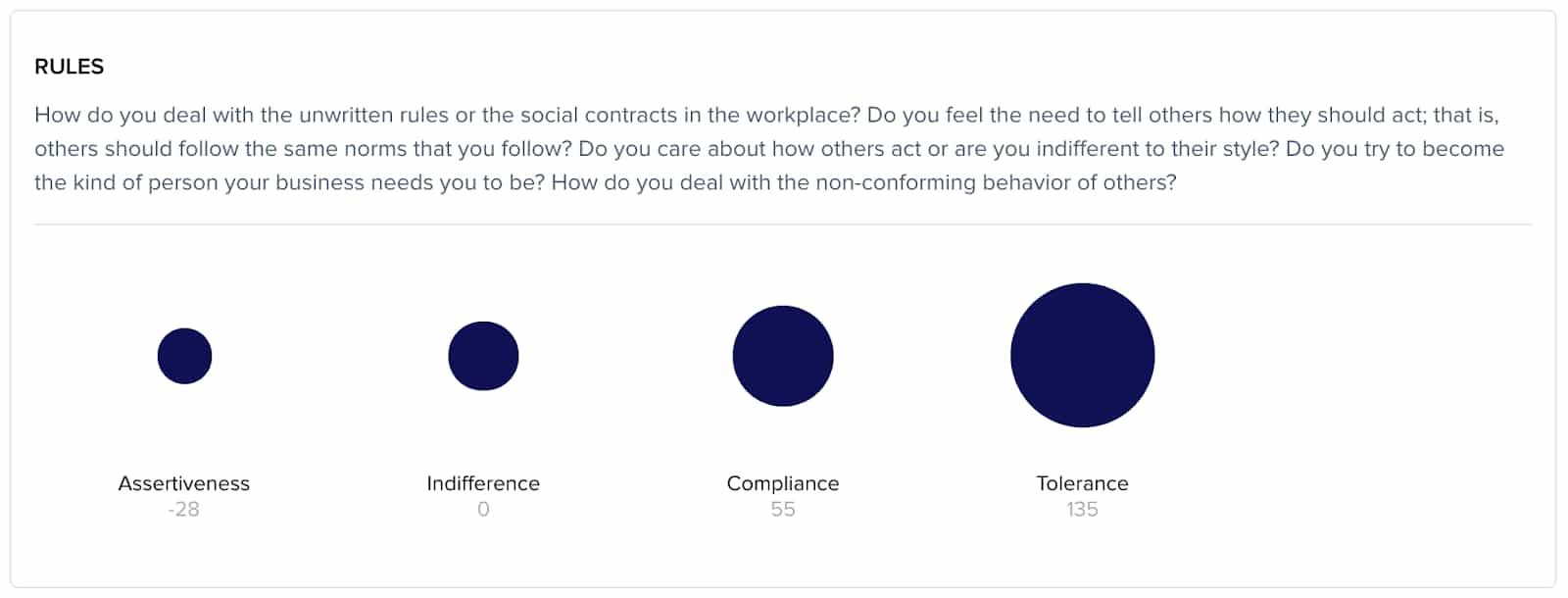
Remember: managers are often not well-supported
There are two things to remember simultaneously here. First, many managers are not trained well. An average age for first managerial promotion is 30; the average age for first managerial training is 42. That’s, ahem, 12 years. Managers are not always taught how to be managers.
Secondly, one of the most popular articles of 2019 on The New York Times website was called “Why don’t rich people just stop working?” It’s a good question, and popular podcaster and author Tim Ferriss attempts to answer it within the article:
“Once they have no financial need to work — are ‘post-economic,’ as some say in San Francisco — they have trouble shifting into lower gears,” Mr. Ferriss wrote. “They’re like drag racers who now have to learn to navigate the turns and intersections of neighborhoods at 30 miles per hour.”
Well, what you need to remember is that many CEOs and owners of companies fall into this boat. While they’re still around, they’re often pushing the people in their companies to do more, work harder, hustle more, etc. -- because that’s the mentality they understand. That permeates down to lower levels, which is why New York Times also once described Amazon as a “bruising workplace.”
Put these two together: managers often aren’t trained well, and they’re pressured from above to always be on the go. So, sometimes a manager may not have time for you, or appear disinterested, or act like a jerk. It doesn’t mean your relationship is shot. It just means they are juggling a lack of training and a ton of pressure. Understand where they’re at and it helps with managing your boss.
Pro tip: Understanding your boss’ ‘Work Approach’ style in F4S can help you really get a feel for how your boss internally approaches their work.
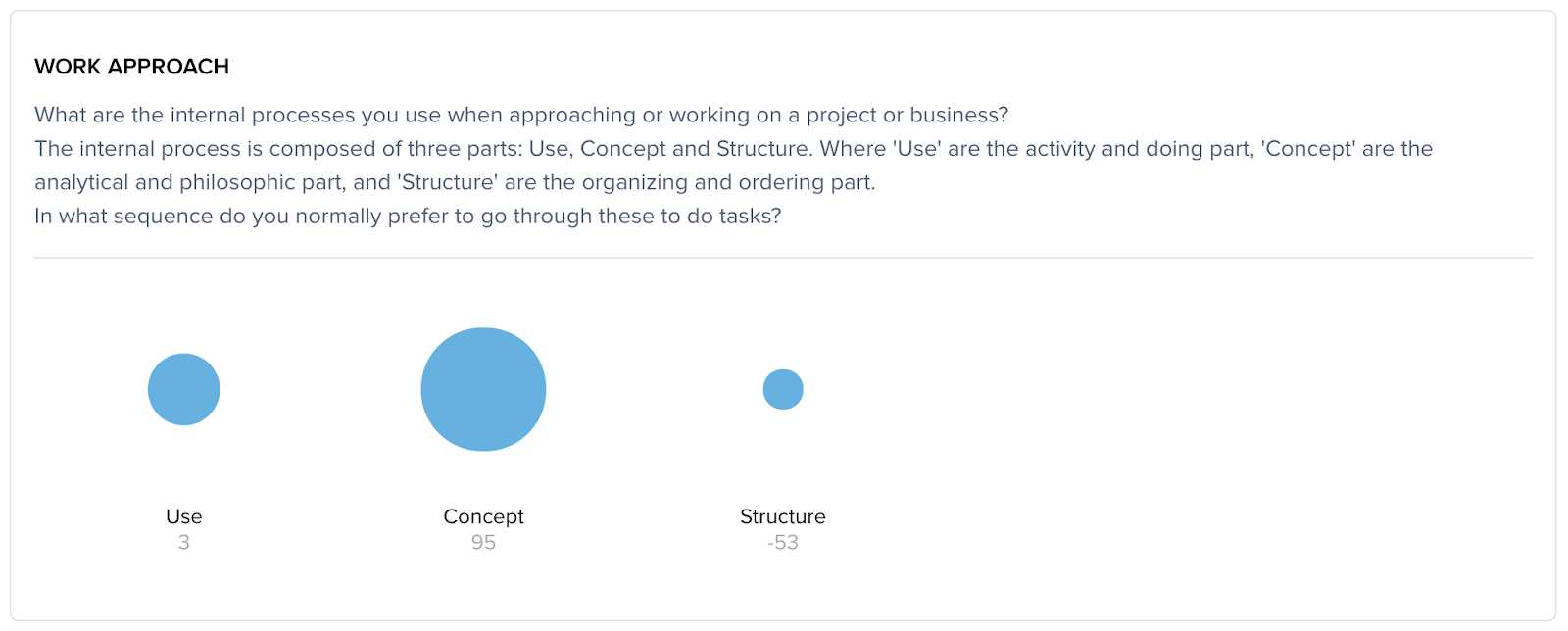
For example, if they are really motivated for Concept, but hate Structure, bombarding them with ideas on organizing work better might not go over so well. In that case, you’d be better off with a suggestion like:
“I know you have a lot on your plate, and I have a few ideas on how we can organize our work better to increase productivity. Do you mind if I work on this as a project? I love organizing and I think it could save us both some time.”
Tying in an ‘Interest Filter’ or two could really help the suggestion to be well-received!
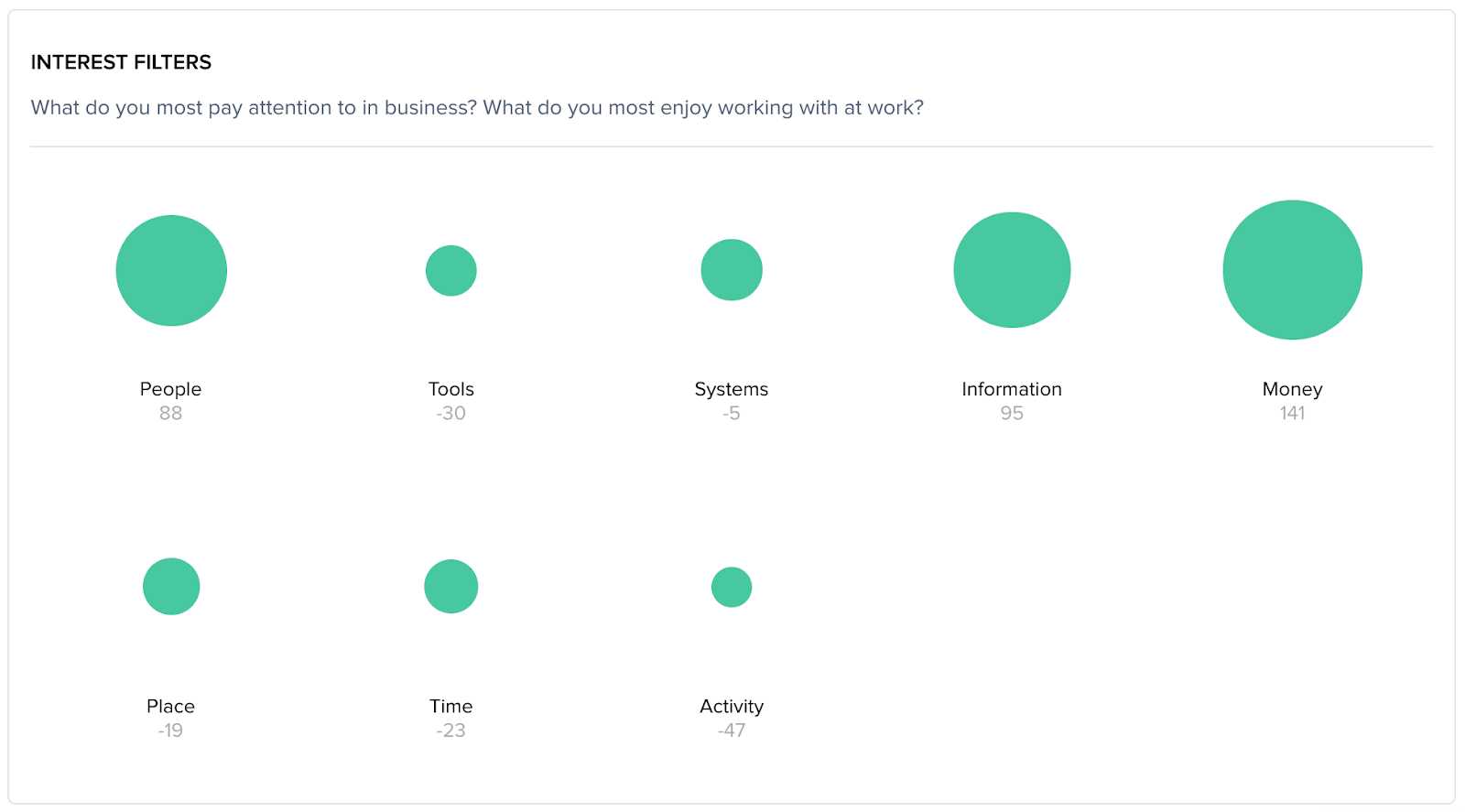
Managing your boss: But what do YOU want long-term?
You probably won’t stay at your current job forever; very few of us do anymore. If there will be other roles, other titles, and other companies in the future … how do you see that? What do you want? When you ask yourself “What should I do with my life?” what immediately pops up? If you’re drawing a blank, it’s time to go back to the basics and find out what motivates you.
Your current boss is a cog in the machine of helping you get there in terms of referrals, recommendations, contacts, speaking to your work ethic, and much more. What do you need to accomplish in your relationship with your boss to keep your goals in focus? Think about all of the above.
What could you do for your boss so that, in a year or two, he or she will write you an amazing review? Think along those lines. Managing your boss is ultimately about how your boss wants to be supported themselves, because then a dynamic of trust and rapport and mutual benefit is built, and everyone wins.
You can use F4S to find out your boss’ preferred communication style, what motivates them and even identify (and resolve) potential areas for friction. Sign up for free today.
Learn how to manage your boss (even if you're not a leader) with fast AI coaching.
Our programs were designed by world-renowned coaches. Sessions only take 5-15 minutes. Get started for free with your personalized program now.
My coaching Plan:
Our expert coaches have designed hyper-effective programs that will help
you manage your boss.
Coach Marlee (your amazing AI-powered personal coach) will analyse your unique traits and goals to let you know which program to start with (and if there are any you should skip)!
Your recommended programs include:
My Coaching Plan:
Our expert coaches have designed hyper-effective programs that will help you improve your mental health, wellbeing, productivity, leadership and more.
Coach Marlee (your amazing AI-powered personal coach) will analyse your unique traits and goals to let you know which program to start with (and if there are any you should skip)!
Your recommended programs include:

Team Building
Take your teaming to the next level in this high impact 9-week team coaching program with Coach Marlee. Discover and optimize complementary strengths and unique talents with your team, reach decisions together quickly, enjoy team cohesion, high energy and motivation as a bonded team.

Attention to Detail
Impress yourself and others with your attention to detail! Develop a genuine appreciation, energy and stamina for detailed thinking to execute your vision, measure performance in yourself and others while also accelerating your ability to learn and change.

Personal Power
In this high impact eight week program Coach Marlee will help you increase your comfort and confidence to be in positions of influence and leadership, navigate organizational politics and also help you develop greater confidence to compete and influence at the top of your industry or field.

Multiply Your Impact
Multiply your impact by embracing the experience and genius within others. During this eight week program Coach Marlee will help you to develop a genuine appreciation for experimentation and data and a willingness to empower the opinions, feedback and insights within your team and others in your life.

Trust Your Gut Feel
Explore, strengthen and stand by what you believe in at work and in life. Trust in your ‘gut feel’ and point of view is especially helpful for influencing, starting your own business, having your personal needs met and for living an authentic and meaningful life.

Big Picture Thinker
Inspire yourself and others to see the bigger picture! Increase your comfort and use of abstract and strategic thinking to gain a broader perspective in work and life. Big picture thinking is key in communication, leadership, businesses, selling, marketing, and situations where you need to get the gist of things quickly.

Reflection & Patience
Develop ‘step back’ mastery for increased self-awareness and developing mindsets and tools for constant improvement. Reflection and patience is core to consolidating learning, development, strategic thinking, recharging and living an authentic and meaningful life.

Start Fast
Close the gap between your great ideas and starting them. Energy and drive for starting is key for inventing new things, starting businesses, selling, marketing, socializing or in situations where you need to think on your feet.

Increase EQ
Explore, develop or strengthen your emotional intelligence (EQ). Awareness of your and others’ emotions is at the heart of influencing, ‘reading people’, impactful communication, deep relating and authentic connection at work and in life.

Goal Catcher
Inspire yourself and others to see and achieve grand visions and goals. A focus on goals is especially helpful for inspirational leaders, starting your own business, impactful communication, or for achieving awesome outcomes at work and in life.
Testimonials

“The Trust Your Gut coaching program with Marlee was simply amazing. It really helped me to reflect on my decision making style in a new light and boosted my confidence. I 200% recommend!”

“I found how to not give up!”

“Marlee helped me discover skills in myself and others on how to work together as a team!”

“I learned to manage my stress about details”

“I learned how to set, move to take action and progress towards happiness”

“I learned to make real progress, take action, review”

“Marlee creates momentum and feels good to move ahead”

"With attention to detail program, I learned a whole new way to see and approach projects"
Related Articles
What’s your communication style?
Learn how to connect with colleagues and boost workplace motivation.

Name Surname
Position, Company name

Name Surname
Position, Company name

Name Surname
Position, Company name

Name Surname
Position, Company name

Name Surname
Position, Company name

Name Surname
Position, Company name
Your submission has been received!

Hack your wellbeing, productivity and goals
Programs are created by expert coaches & delivered by our incredible A.I. Coach Marlee. Sessions only take 5-15 minutes and are 100% personalized to fit your unique traits and goals.
